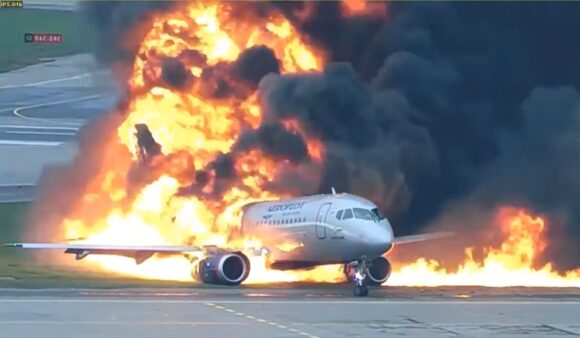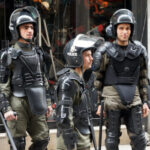London Southend Airport remains closed indefinitely following a dramatic plane crash that eyewitnesses described as erupting into a “huge fireball.” The incident occurred on Sunday afternoon, shortly before 16:00 BST, when a small 12-metre aircraft crashed at the airport in Southend-on-Sea, Essex.
Essex Police responded swiftly to reports of the burning aircraft and confirmed the scene was secure. However, there is still no official confirmation regarding the number of casualties involved. All flights scheduled for Monday—both arrivals and departures—have been rerouted, according to a statement on the airport’s website, which urged passengers to check directly with airlines for the latest updates.
The plane involved in the accident has been identified as a Beech B200 Super King Air operated by Dutch firm Zeusch Aviation. In a statement, the company confirmed that its SUZ1 flight was “involved in an accident” and said it was cooperating with investigators. The aircraft had taken off from Athens, stopped in Pula, Croatia, and was on a route to Lelystad Airport in the Netherlands, with Southend as a stopover.
Zeusch Aviation, based at Lelystad, expressed sympathy for those impacted by the crash, saying their “thoughts are with everyone who has been affected.”
Eyewitnesses near the airport described scenes of horror. John Johnson, 40, from Billericay, Essex, was at the airport with his wife and children, watching planes as part of a family outing. He recounted seeing the pilots smile from the cockpit before the aircraft powered down the runway and took off.
“It lifted off in three or four seconds and started banking sharply to the left,” Johnson said. “I told my wife that was unusual—planes don’t normally turn like that so early into ascent. Within seconds, it looked like the plane almost inverted and crashed head-first into the ground. Then came the fireball.”
Johnson immediately called emergency services. Another witness, James Philpott, a bartender at the nearby Rochford Hundred Golf Club, said he felt an intense heatwave from the crash while in a hut on the course. “I looked up and saw a massive fireball. Everyone was in shock—we’ve never seen anything like this before,” he said. Some people ran toward the wreckage, hoping to assist anyone injured.
Due to the crash’s proximity, people on the golf course were evacuated as a precaution. However, patrons in the more distant clubhouse were not asked to leave. Nearby, Westcliff Rugby Club’s chairman Pete Jones reported that while initial police instructions suggested an evacuation, those were later reversed. “We had about 250 people at a major event, and the police decided it wasn’t necessary to evacuate,” he said, noting that the crash site was approximately 1,000 metres from their location and that visible smoke followed the impact.
The Air Accidents Investigation Branch (AAIB) has launched an investigation into the crash, with Essex Police assisting. Chief Superintendent Morgan Cronin emphasized the importance of gathering facts in the early stages and pledged to continue supporting the community. The force requested the public use a dedicated major incident portal to avoid overloading emergency lines.
Transport Secretary Heidi Alexander addressed the public on social media platform X (formerly Twitter), stating: “I’m aware of the tragic incident at Southend Airport this afternoon. Emergency services are on the scene and advising people to avoid the area. I am monitoring the situation closely and receiving regular updates.”
Local leaders also responded swiftly. Southend West and Leigh MP David Burton-Sampson and Southend City Council cabinet member Matt Dent both expressed concern for those affected. Labour MP for Southend East and Rochford, Bayo Alaba, told BBC Essex that the event “really shook me. My heart and thoughts go out to the families involved.”
Flight tracking data and aviation records confirmed the aircraft was a Beech B200 Super King Air. BBC correspondent Tom Symonds described the plane as an “all-purpose workhorse of the skies,” frequently used for medical evacuations, transporting transplant materials, and aerial mapping.
Symonds also commented on the likely cause of the crash, referencing previous incidents involving this aircraft type. Witness reports of the aircraft veering left before crashing align with known cases of left engine failure. He highlighted a prior Australian crash in which throttle lever slippage was found to reduce power output—something that investigators may examine in this case. Nevertheless, he noted, the aircraft is designed to fly with a single engine.
As authorities comb through the wreckage and launch a thorough investigation, the Southend community remains on edge, with the airport’s reopening uncertain and many still awaiting news about those on board.






